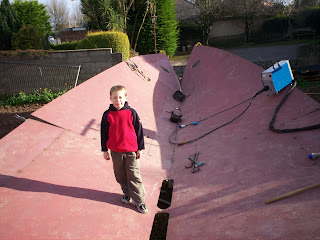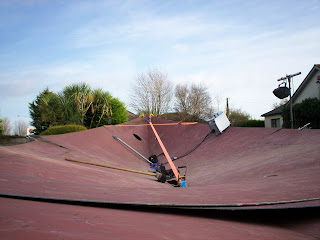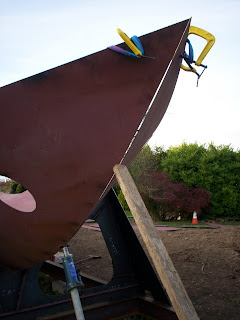Model makers are one heck of a competitive group of people. Its a good thing - it makes the art better and better. Good model makers always want to get to that "next level". Its not unlike other arts or music. I love to see what others do and sometimes Im blown away. Take for example, functioning miniature V-8 engines, or huge R/C 747s, or some of the Gibbs & Cox ship models from the 40s (lets not forget August Crabtree). I used to make more R/C boats professionally, but true R/C afficianados want to be able to claim credit for the performance of their model themselves.
Sometimes there are aspects to our competitiveness that have to be watched. Often a model-maker looks at what another model-maker has in front of them and unconsciously assumes that they are seeing that model-makers best work. This is how we reassure ourselves of our abilities and is natural.
Unfortunately, such comparisons may be flawed...
You will never, ever, see our best works, unless you are our customer, or the work is on display in public. Why? We cant risk traveling with works that are either too fine, or at a stage of construction where the details are too delicate. Dealing with preparations for shipping is scary enough.
When you make models for a living, there is an "economics" to the work. Some models cost hundreds of dollars while others cost tens, even hundred, of thousands of dollars. Its self-explanatory; the amounts of time, effort and quality of materials differ at each end of the spectrum.
You may be familiar with intricate models made from pieces of bone or toothpicks by someone imprisoned for decades. With nothing else to do for 20 years, it was probably therapeutic and the only thing to do. I cant imagine... Occasionally we run into someone that has been working on a single model for over 20 years. Its not the same situation, but what they have is usually wonderful.
Weve got to be careful about our comparisons. Often times between apples and oranges. We look at someone elses great work and become depresssed. Why? Model-making is about learning and getting better. If it is that great, learn from it. Bear in mind that your own work may be better than you realize.
Much worse is to make an assumption of another model-makers capabilities in order to measure your own.
I will say it again, "you cannot know what you dont know". This means that while youve got your chest out about your great skills, someone will come along and "blow you away", because you werent paying attention.
All model makers are different in some way, shape or form. I seriously doubt that August Crabtree could have built a functional V-8 engine and the converse for the engine modeler. They are/were both great model-makers. I think that they would both have respected each others work, knowing the differences.
Your most important competition is with yourself. Work on learning more. Judge yourself fairly. Make models that you like and in the way that you believe they should be made. You will probably change your beliefs every now and then, but if you keep growing, youll be contributing to the world of model-making.
"Always sign your work. Its very sad to see a great model with no way of knowing who made it."



















